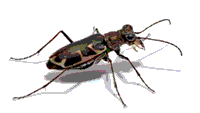Entomology, Department of

Department of Entomology: Faculty Publications
Document Type
Article
Date of this Version
12-2024
Citation
Scientific Reports (2025) 15: 1049
doi: 10.1038/s41598-024-84990-0
Abstract
This study aims to enhance sustainable disease management in black gram by identifying varieties resistant to Mungbean Yellow Mosaic India Virus (MYMIV). We screened sixteen black gram genotypes, assessing physiological, biochemical and enzymatic basis. Results revealed a range of resistance levels, with PANT URD-19 showing the highest resistance (PDI 0.47%) and Pejua the lowest (PDI 37.24%). Seven genotypes demonstrated strong resistance, highlighting the necessity for targeted breeding. Variations in leaf thickness, trichome density, stomatal frequency, and epicuticular wax content were significant, with resistant varieties like LBG-888 and PANT URD-19 exhibiting thicker leaves, higher trichome density, and more wax, correlating with reduced susceptibility. Chlorophyll content was higher in resistant varieties, while susceptible ones had reduced levels and increased sugar content, which may exacerbate MYMIV impact by attracting more whiteflies. Enzymatic analysis showed that resistant genotypes had elevated POD, SOD, and PAL activities, supporting their enhanced defense mechanisms. Multivariate analysis confirmed these findings, with leaf thickness, trichome density, and wax content negatively correlating with disease severity, while stomatal frequency and total sugar content were positively correlated. These results emphasize the potential of these traits in developing MYMIV-resistant black gram varieties and support the advancement of eco-friendly agricultural practices.
Dutta et al 2024 SR MYMIV Supplemental material


Comments
Copyright 2024, the authors. Open access
License: CC BY-NC-ND 4.0